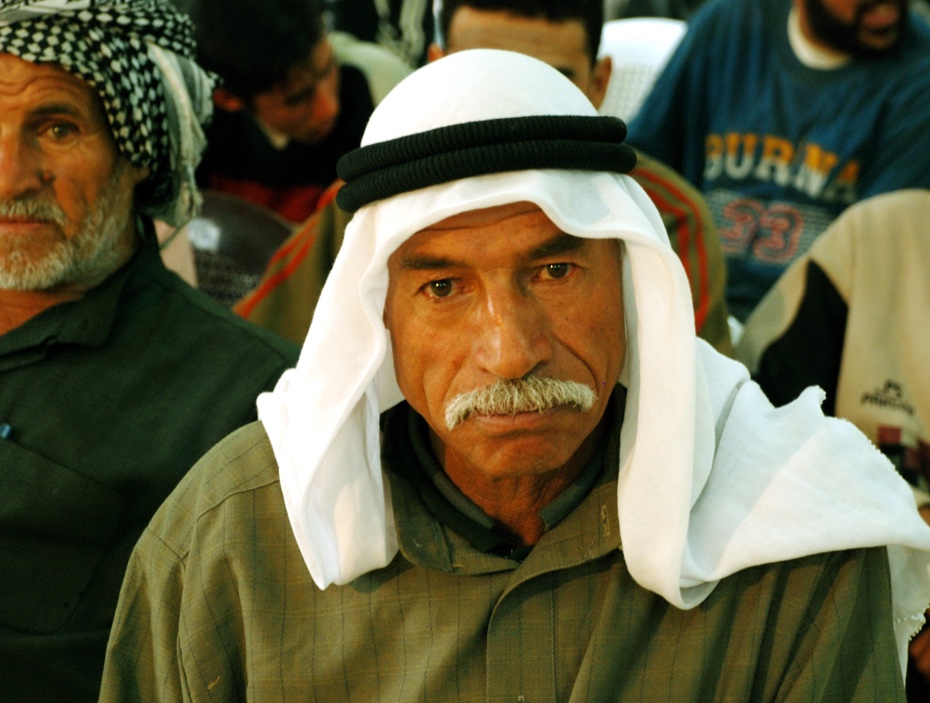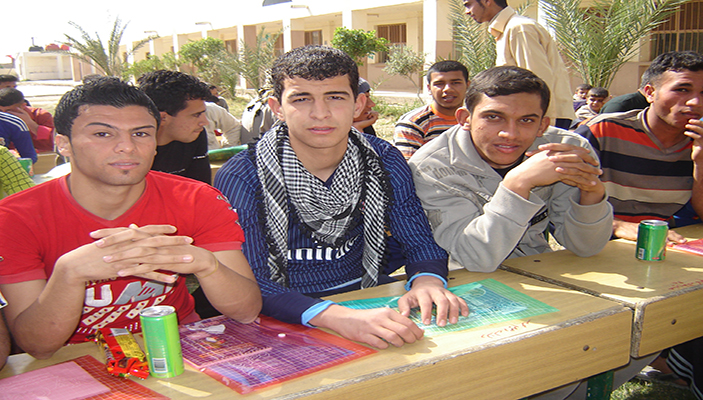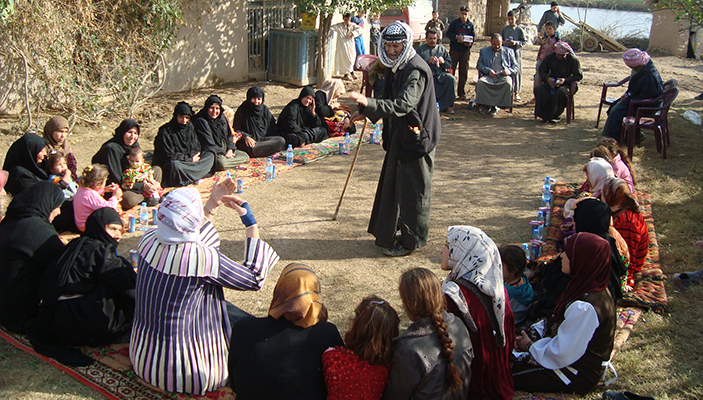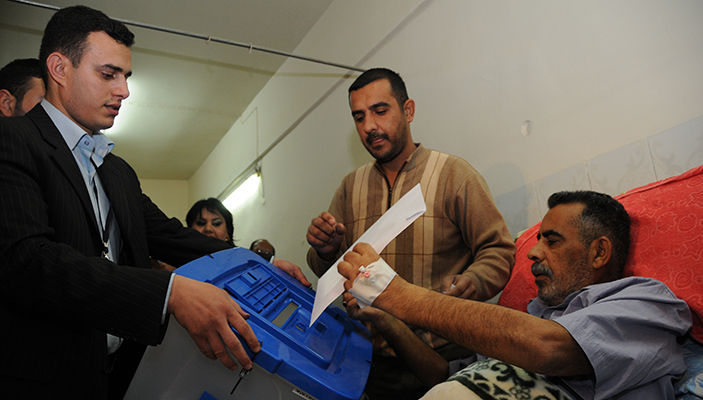New Possibilities: The Role of Governance in Countering Violent Extremism in Iraq
Jun 22, 2017
Can improving governance contribute to the fight against violent extremism? While the absence of good governance is often cited as a driver of violent extremism, it is less clear how the presence of good governance can contribute to its reduction. In the case of Iraq, violence has not only been endemic for much of its modern history, but violence itself was the basis of governance and often glorified as a legitimate lever of change. This paper explores how improving governance can both inhibit radicalization and promote de-radicalization, drawing in part on examples taken from U.S. Agency for International Development (USAID) and other projects in Iraq, Afghanistan, and Sudan.

Under the Obama Administration, the U.S. Government policy on countering violent extremism (CVE) was articulated by the Department of State and USAID in two papers appearing in 2011 and 2016, as well as in a White House conference on the subject in 2015. It would perhaps be more accurate to say that these documents reflect one aspect of the U.S. Government response, since the overwhelming majority of resources devoted to CVE have supported military or policing operations against violent extremist organizations. Daniel Aldrich has estimated that between FY 2001 and 2012, for example, only 5 percent of the total amount spent on the “War on Terror” went to diplomatic and development efforts.
While such “hard power” operations are no doubt critical, by definition they take place after radicalization has taken place. They address an existing problem rather than prevent its emergence. Within the U.S. Government, there is an ongoing debate as to whether CVE efforts should comprise mainly military operations or whether we need a greater emphasis on non-kinetic and non-lethal approaches. My supposition is that the latter approach not only mitigates violent extremism—it may also assist military operations when these are deemed necessary.
In Iraq, the effort to improve governance in general has been complicated by weak existing government structures. Since the U.S.-led invasion in 2003, Iraqi governments have had to contend with intense sectarian mistrust, which has led to near civil war-like conditions compounded by self-imposed problems of corruption and lack of transparency. Absent general security—real or perceived—Iraqis have taken shelter within their narrower ethnic or sectarian identities, urged on by unscrupulous politicians, religious leaders, and neighboring countries enacting their own agendas. Recent polling and events indicate that the current Iraqi government continues to be seen as a largely Shia institution that enjoys limited legitimacy among the country’s Sunnis. While extremism is not purely a Sunni phenomenon, their grievances have been exploited by transnational Sunni extremist groups including al Qaeda and, currently, ISIS.
Various solutions have been proposed to address Iraq’s deficit of good governance. Efforts to strengthen local governance by increasing accountability and decentralizing power to the provinces have taken on particular importance. While these efforts are valuable in their own right, they do not directly take on the issue of violent extremism. They do, however, attempt to improve some of the conditions widely held to foster such extremism. Given that much of the recent literature on CVE emphasizes the importance of a local approach, the prospect of using planned programming to improve local governance to strengthen CVE efforts appears promising.

What is CVE?
Despite the vast resources spent to address violent extremism, it has no universally agreed definition. Writing for the Foreign Policy Research Institute, Will McCants and Clinton Watts found “there is not a shared view of what CVE is or what it should do” when referring to U.S. Government policy initiatives. In their 2016 Joint Strategy on CVE, USAID and State defined CVE as “proactive actions to counter efforts by violent extremists to radicalize, recruit, and mobilize followers to violence and to address specific factors that facilitate violent extremist recruitment and radicalization to violence.” This definition implies that CVE takes place before radicalization by emphasizing the pre-emptive nature of the activity.
Clearly, efforts to suppress radicalization before it occurs must form a central piece of the policy response. Others have stressed that in order for CVE to be effective, it must also provide a path back from radicalization—a redemption that may occur after incarceration or other legal sanctions but that also prevents a return to radicalization. Some observers have sought to distinguish between sympathizers of radical extremist groups and full-blown supporters (see McCants and Watts), while others note the difficulties in doing so, pointing out that members of violent extremist organizations often separate themselves from the community in which most sympathizers are found, although they communicate with them, often via social media.
Part of the difficulty in defining CVE stems from difficulties in describing it. Understood from a larger social, cultural, and political context, violent extremism can be seen as the product of numerous factors, such as marginalization or as a religiously justified response to political circumstances. But as our focus moves down to the community and even to the individual level, other factors emerge that can only be understood in a local context. For example, researchers found that youth in Kenya were motivated to join al-Shabab largely because of the lack of educational opportunities, while young men in Saudi Arabia presented religious justifications for their radicalization.
A consensus holds that there is no “silver bullet” to tackle the multiplicity of causes leading to radicalization, just as there is no single path leading there. But considerable attention has been given to the various “push” and “pull” factors driving individuals toward violent extremism. In USAID and State’s Joint Strategy, cited above, push factors “create the opportunities for violent extremists to gain traction,” while pull factors include those tactics used by extremist organizations to attract recruits. Push factors include systematic human rights violations, marginalization, ungoverned or poorly governed areas, and endemic corruption; pull factors include the perversion of religious doctrine or an appeal to an individual’s sense of self-worth or desire for advancement. Extremist organizations may also goad an individual to avenge perceived injustices. Implicit in all these factors is the idea that traditional political means are incapable of correcting the existing, intolerable situation.
Daniel Aldrich sees this last concept as an opening for the use of “soft power” in CVE: “recognizing the multiple factors which can radicalize individuals and either push or pull them to join violent extremist organizations, the soft approach to counter-terrorism seeks to decrease the likelihood of recruitment and dry up the labor pool for potential terrorists.” For Aldrich, soft power may “give potential recruits a viable alternative for which to live, not die,” a useful corollary to U.S. Admiral and Chairman of the Joint Chiefs of Staff Mike Mullen’s recognition that “We cannot kill our way to victory.” In addition, kinetic operations can cause collateral damage that undermines CVE efforts by reinforcing the narrative of grievances against the West.

What Should Be Expected from a CVE Program in Iraq?
If the absence of good governance is one of the push factors driving extremist recruitment, and if—as the Joint Strategy argues—local solutions are critical in addressing drivers of radicalization, then the role of local government in facilitating such solutions is clear and compelling. In the case of Iraq, however, local government is hampered by a low degree of trust, which stems in turn from those governments’ chronic inability to deliver basic services. The many causes of these failures include a lack of staff capacity but also structural problems such as an incomplete program of decentralization, which has led to confusion about roles and responsibilities.
Any governance program broadly applicable to the problem of violent extremism in Iraq would at minimum seek to incorporate the following themes:
- Data. Generally speaking, we need a more accurate rendering of the problems confronted by Iraqi communities. At present, we have mostly anecdotal evidence of the prevalence of specific drivers. For example, regarding the Sunni community, there are an estimated 25,000 fighters currently with ISIS in Syria and Iraq. While some of these are foreigners and others have been forcibly conscripted, we lack reliable information about where most of the fighters come from and the specific factors behind their radicalization.
- Legitimacy. Only through government can the problems of political and social marginalization be addressed successfully in the long term. Additionally, good government can serve as a coordinating body for various strands of a locally implemented CVE policy.
- Religion. Given that much of Iraq’s violent extremism is the result of sectarian divisions, interventions need to pay specific attention to the role of religion and seek to recover a tolerant religious narrative to undercut that used by extremist organizations.
- Civil Society. Civic organizations can play a vital role in addressing those gaps that local governments are unable to fill.
- Integration. Programs should emphasize both counter-radicalization and de-radicalization, the precise blend depending on local conditions. Where there are significant numbers of returnees from violent organizations, for example, in areas recently recaptured from ISIS, the de-radicalization components will be critical.
- Youth. CVE depends largely on how well we deal with the problems of youth in situations where extreme violence is the norm rather than the exception. The role of women is of equal importance given the degree to which mothers and other female authority figures influence young people toward or away from violent extremism (as in the case of the “Hakamat” singers in Sudan, discussed below).

Case Studies
Much of the writing on CVE is theoretical in nature or offers possible interventions based on generic assumptions extrapolated to what is known of local conditions. In the following section, I attempt to shed some light on the possible approaches in Iraq by reference to approaches proven successful or relevant in other contexts.
Strategic Communications. USAID’s Kenya Niwajibu Wetu project (known as NIWETU, or “It’s our responsibility” in Kiswaheli), implemented by DAI, shows the importance of strategic communications. A stakeholder engagement forum of 64 participants found that existing counter-terrorism efforts were perceived as coercive, with inadequate attention paid to the rights of those targeted. The forum revealed there was only a limited understanding of what CVE efforts were supposed to accomplish, thanks in part to inadequate attention paid to these efforts by local media. Participants complained that massive security sweeps were exacerbating radicalization rather than diminishing it. And against this backdrop of escalating drivers there was no salient, credible counter-narrative to mitigate extremist messaging. Accordingly, the project decided to engage the Supreme Council of Kenyan Muslims to work with vulnerable youth groups to undercut radicalizing religious narratives, and it took immediate steps to engage the local community such as organizing football tournaments for young men. The bottom line: proactive and responsive strategic communications capacity is critical to the CVE enterprise.
Due Diligence and Aftercare. In Singapore, as Ghimar Deeb and colleagues report, security officials designed a complex set of criteria to determine whether a person detained for participating in a violent extremist organization could be released. The assessment included input from religious counselors, prison officials, psychologists, and case workers. In addition, the Aftercare Services Group provides counseling and practical support to families of detainees, including skills training and other forms of post-release help. Family members in general participate in rehabilitation programs where such participation is appropriate.
Moderate Islam. While serving as the Department of State’s Senior Civilian Representative with the 173rd Airborne in Logar and Wardak Provinces, Afghanistan, I worked with Brigade leadership to host influential members of the Logar religious community in Jordan (taking advantage of the presence of a Jordanian battalion posted to our base). Not all the travelers to Jordan were religious figures; some won a place because they were believed to be influential in the broader community. The attendees came back impressed deeply by the peaceful coexistence between Christians and Muslims in Jordan and by seeing a devout Muslim country practicing a more moderate form of their religion. The goal of the visit was to undercut the Taliban message that coexistence between Islam and other religions could only be bought at the price of a compromised faith. While most programs operating in Iraq would not have the resources to fly people abroad, the critical point of disputing a radicalizing religious narrative remains valid.
Alternative Livelihoods—for Men and Women. The Toward Enduring Peace in Sudan (TEPS) program was the sole USAID-funded project in Sudan intended to serve development rather than humanitarian aims. The project worked primarily in conflict zones and sought to mitigate sources of conflict where these existed, but tried as well to help prevent a return to the fighting. As such, TEPS—while not explicitly a CVE program—served many of the same purposes of counter-radicalization and de-radicalization. Noteworthy is TEPS’ work in vocational training and alternative livelihoods for young men and for some of the female-headed households in these areas (of which there were many, due to extended periods of war). Virtually all the young men found employment following their training and after being provided a basic tool kit to help get them started. Similarly, mothers who took alternative livelihoods training reported that their children did not resort to the militias to support their families.
Cultural Programming. A second component of TEPS was peace messaging. Street theater and cultural festivals demonstrated the possibility of peaceful coexistence in areas long ravaged by war. Specifically, the program worked with the “Hakamat” singers, women who traditionally sang songs urging their husbands and sons to fight but in this case took a more conciliatory stance. Of note: Because of sanctions against the Sudanese government, the program could not work directly with national authorities and had to seek indirect approval from local government entities, with implementation though civil society organizations. Such organizations could also be powerful instruments of change in Iraq.

Conclusion
Most observers believe that the Iraqi Government and its Western allies will prevail militarily against ISIS. But the military campaign will not, by itself, end the cycles of violence that plague Iraqi society. Peace and stability can only be achieved through the creation of government structures seen as legitimate by their constituents. While a political “grand bargain” remains elusive, efforts to make local governments more effective could be an important step in tamping down the violence as local governments tend to be present in areas which are more homogeneous demographically and therefore face fewer of the sectarian challenges that the national government confronts.
Efforts to improve local governance could contribute to an overall CVE strategy in the country. In particular, harnessing local civil society organizations—inherently more flexible than government entities—could erect a formidable barrier to the spread of violent extremist organizations. Civil society organizations could take on some of the functions described above, such as bringing religious figures, lay leaders, and government officials together around a more tolerant vision of Islam. And such organizations could deal with the highly localized and in some cases individual factors leading to radicalization, as well as assisting with returnees.
Within this framework, local security forces will still have an important role to play. In some cases, the de-radicalization efforts will have to take place either during or following the extremist’s incarceration. Counter-radicalization can lead to a more effective countering of recruitment techniques used by violent extremist organizations as well as a deeper understanding of the drivers of radicalization in the first place. But as seen in the case of Kenya, a CVE strategy focused exclusively on security can stigmatize an already vulnerable population and increase the likelihood of radicalization rather than reduce it. The purely civilian component of CVE is essential to ensure appropriate messaging and open communications between vulnerable populations and the government.